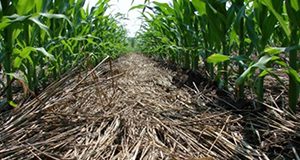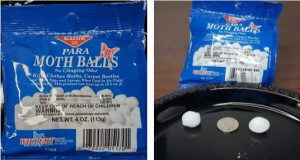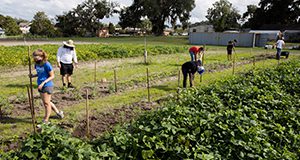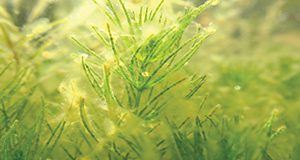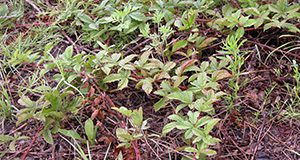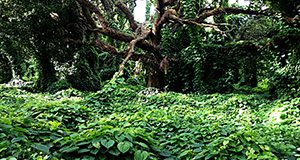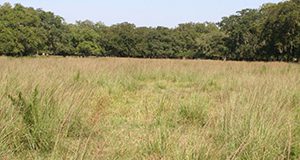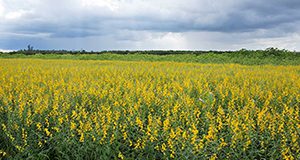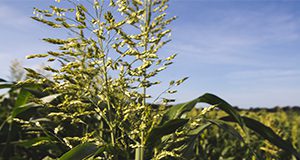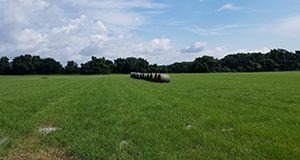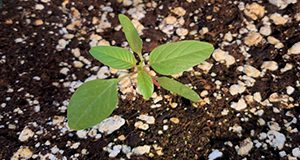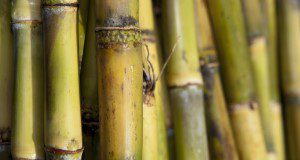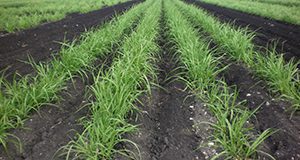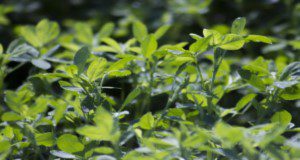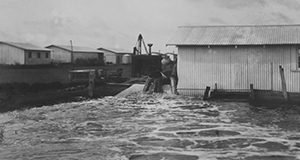When utilizing cover crops for weed suppression, one important consideration is effective termination before planting the main crop. A major issue with improper termination is that the cover crop can become problematic and compete with the main crop, like other weeds. However, proper planning of the termination timing and method can minimize these issues and maximize the benefits of cover crop use. This 5-page publication discusses herbicide application, roller-crimper termination, tillage, and appropriate growth stages for termination. Written by Pratap Devkota, Michael J. Mulvaney, and David Wright, and published by the UF/IFAS Agronomy Department, February 2021.
https://edis.ifas.ufl.edu/ag449
Tag: Agronomy Department
The Facts about Mothballs
Mothballs are widely available for purchase and familiar to many people. However, mothballs are one of the most misused products, and their misuse can cause harmful effects to people or the environment. This new 4-page publication of the UF/IFAS Pesticide Information Office will give the basics about what mothballs are, where they can be used, and their status as a pesticide. Written by Brett W. Bultemeier.
https://edis.ifas.ufl.edu/pi289
Weed Management in Soybeans
Successful weed control is one of the most important practices for economical soybean production in Florida. This 10-page publication discusses weed control methods for soybean growers. Written by J. A. Ferrell, G. E. MacDonald, and P. Devkota, and published by the UF/IFAS Agronomy Department, revised January 2021.
https://edis.ifas.ufl.edu/wg010
Planning and Establishing On-Farm Field Trials
Planning and preparation can increase chances of successful outcomes from demonstration plots. This 5-page publication focuses on guiding the successful establishment of demonstration trials and is targeted to county, regional, and state specialized Extension faculty who aim to develop on-farm research and demonstration sites as part of their programs. Written by Marcelo Wallau, Esteban Rios, and Ann Blount, and published by the UF/IFAS Agronomy Department, January 2021.
https://edis.ifas.ufl.edu/ag447
The Ecology of Charophyte Algae (Charales)
Charophytes are a group of green algae within the order Charales. This 4-page publication provides an overview of charophyte ecology, habitat requirements, and status in the state of Florida. Written by Maximiliano Barbosa, Forrest Lefler, David E. Berthold, and H. Dail Laughinghouse IV, and published by the UF/IFAS Agronomy Department, January 2021.
https://edis.ifas.ufl.edu/ag448
Transitioning from Conventional to Organic Farming Using Conservation Tillage
Organic farming is one of the fastest-growing segments of the agricultural industry in the United States and in Florida. Conservation tillage is often employed to reduce soil erosion, improve physical and biological properties of soil, and increase water use efficiency. This 5-page article aims to provide recommendations to row crop farmers who wish to implement conservation tillage practices during their transition to a certified organic system. Written by D. L. Wright, J. Moyer, D. Treadwell, I. M. Small, and S. George, and published by the UF/IFAS Agronomy Department, revised November 2020.
https://edis.ifas.ufl.edu/ag246
Boom Sprayer Calibration Tables
This 13-page publication is meant to make calibration of boom sprayers easier, and therefore more common, by providing a convenient chart that can be kept in barns, tractor cabs, sprayers, and mix-load facilities for quick reference. Written by Michael J. Mulvaney, Pratap Devkota, Ethan Carter, De Broughton, and Mark Mauldin, and published by the UF/IFAS Agronomy Department, November 2020.
https://edis.ifas.ufl.edu/ag446
Blackberry and Dewberry: Biology and Control
Blackberry and dewberry are often viewed as nuisance weeds that reduce grazing in a portion of the pasture. However, severe financial losses can occur if these growing thickets injure cattle. This 4-page document provides information regarding blackberry and dewberry management in pastures. Written by Brent Sellers, Pratap Devkota, and Jason Ferrell, and published by the UF/IFAS Agronomy Department, revised November 2020.
https://edis.ifas.ufl.edu/ag238
¿Perdidos en la maleza? Una guia exhaustiva de malas hierbas no autoctonas en Florida
Este artículo tiene como objetivo informar al público en general, administradores de tierras, investigadores, autoridades locales y estatales, y a todo aquel que busque orientación para acceder a listados de plantas no autóctonas en el estado de Florida, tanto normativos como no normativos. En este documento se explica el origen de las listas, el significado de la inclusión en una lista en concreto y la forma de acceder a cada una de ellas. Written by Deah Lieurance, Lyn A. Gettys, and Germán Sandoya-Miranda, and published by the UF/IFAS Agronomy Department, November 2020.
https://edis.ifas.ufl.edu/ag444
Pintoi Peanut: A Seed-Propagated Perennial Peanut Forage Option for Florida
Because of its adaptability to Florida's environmental conditions and ability to produce viable seeds, pintoi peanut represents an interesting forage alternative for cow-calf producers in the state. This 5-page document provides current information on pintoi peanut for forage and livestock producers in Florida. Written by Joao M. D. Sanchez, Joao Vendramini, Maria L. Silveira, Jose C. B. Dubeux Jr., Lynn E. Sollenberger, and Philipe Moriel, and published by the UF/IFAS Agronomy Department, November 2020.
https://edis.ifas.ufl.edu/ag445
Smutgrass Control in Perennial Grass Pastures
This 4-page document provides an overview of smutgrass biology, control, and general recommendations. Written by Brent Sellers, Neha Rana, José Luiz C. S. Dias, and Pratap Devkota, and published by the UF/IFAS Agronomy Department, revised October 2020.
https://edis.ifas.ufl.edu/aa261
Questions and Answers for Using Sunn Hemp (Crotalaria juncea L.) as a Green Manure Cover Crop
This 4-page document synthesizes information about the warm-season cover crop, sunn hemp. It addresses frequently asked questions for growers and summarizes the expanding body of sunn hemp research. The information is provided so growers in Florida can learn about up-to-date cultivation and management options as well as better understand sunn hemp’s practical uses. Written by Thioro Fall, Ariel Freidenreich, Stacy Swartz, Christopher Vincent, Yuncong Li, and Zachary Brym, and published by the UF/IFAS Agronomy Department, July 2020.
https://edis.ifas.ufl.edu/ag443
Weed Management in Peanuts
Successful weed control in peanuts involves use of good management practices in all phases of peanut production. This 11-page document lists herbicide products registered for use in Florida peanut production, their mode of actions group, application rate per acre and per season, and reentry interval. It also discusses the performance of these herbicides on several weeds under Florida conditions. Written by J. A. Ferrell, G. E. MacDonald, and P. Devkota, and published by the UF/IFAS Agronomy Department, revised May 2020.
https://edis.ifas.ufl.edu/wg008
Adjusting Crop Yield to a Standard Moisture Content
Since there are different ways to report moisture (as a decimal or as a percentage), and because the calculation seems intuitive, there is some confusion among agricultural professionals about how to adjust yield to a standardized moisture content. This 4-page publication aims to clarify the concept and the math. Written by Michael J. Mulvaney and Pratap Devkota, and published by the UF/IFAS Agronomy Department, May 2020.
https://edis.ifas.ufl.edu/ag442
Bermudagrass Production in Florida
This 10-page document is primarily for Extension agents and farmers looking for detailed information about bermudagrass production in Florida, including cultivar characteristics, fertilization, and pest and disease management. Written by M. O. Wallau, J. M. B. Vendramini, and J. K. Yarborough, and published by the UF/IFAS Agronomy Department, revised May 2020.
https://edis.ifas.ufl.edu/aa200
Amaranthus palmeri—Palmer Amaranth
Palmer amaranth has become one of the most troublesome weeds in the southeastern US due to its vigorous growth rate, high seed production, and development of resistance to herbicides from multiple modes of action. This 4-page publication illustrates characteristics of this weed to assist in accurate identification, proper management, and development of effective control strategies. Written by Sergio Morichetti, Jason Ferrell, and Pratap Devkota, and published by the UF/IFAS Agronomy Department, revised April 2020.
https://edis.ifas.ufl.edu/ag346
Soil Organic Matter Impacts on Sugarcane Production on Florida Mineral Soils
Sugarcane growth on mineral soils in Florida can often be highly variable as related to the nature of the soils. The soil factor that best relates to sugarcane growth is soil organic matter content. Very stunted sugarcane is also associated with high nematode populations, which indicate high risk of crop damage. This new 4-page publication of the UF/IFAS Agronomy Department discusses grower options for evaluating and increasing soil organic matter. Written by J. Mabry McCray and Stewart Swanson.
https://edis.ifas.ufl.edu/ag441
Sugarcane Cultivar Descriptive Fact Sheet: CP 06-2400, CP 06-2042, and CP 07-2137
This 5-page fact sheet provides basic information and yield and disease information for CP 06-2400, CP 06-2042, and CP 07-2137 to assist growers in better selection and management of these cultivars. Written by Hardev Sandhu, Matt VanWeelden, and Wayne Davidson, and published by the UF/IFAS Agronomy Department, December 2019.
http://edis.ifas.ufl.edu/sc106
Condensed Tannins in Forage Legumes
The use of tannin-containing forages has received attention from researchers around the globe because of potential benefits of condensed tannins to livestock health and nutrition as well as possibilities to reduce methane emission. This new 4-page publication of the UF/IFAS Agronomy Department targets two audiences: Extension faculty who need information on potential benefits and negative effects of condensed tannins to livestock production, and producers who intend to feed tannin-containing forages in their operation. Written by Flavia van Cleef and Jose Dubeux.
https://edis.ifas.ufl.edu/ag440
Hurricane Preparedness for Forage Crops in the Southeast United States
This 4-page document provides information on preparing forage crops, conserved forage, and grazing areas for potential hurricane damage and alleviating hurricane damage on forage crops and grazing lands in the Southeast United States, with an emphasis on the Florida peninsula and Gulf Coast. Written by José C. B. Dubeux, Jr. and Edward K. Twidwell, and published by the UF/IFAS Agronomy Department, November 2019.
http://edis.ifas.ufl.edu/ag439
